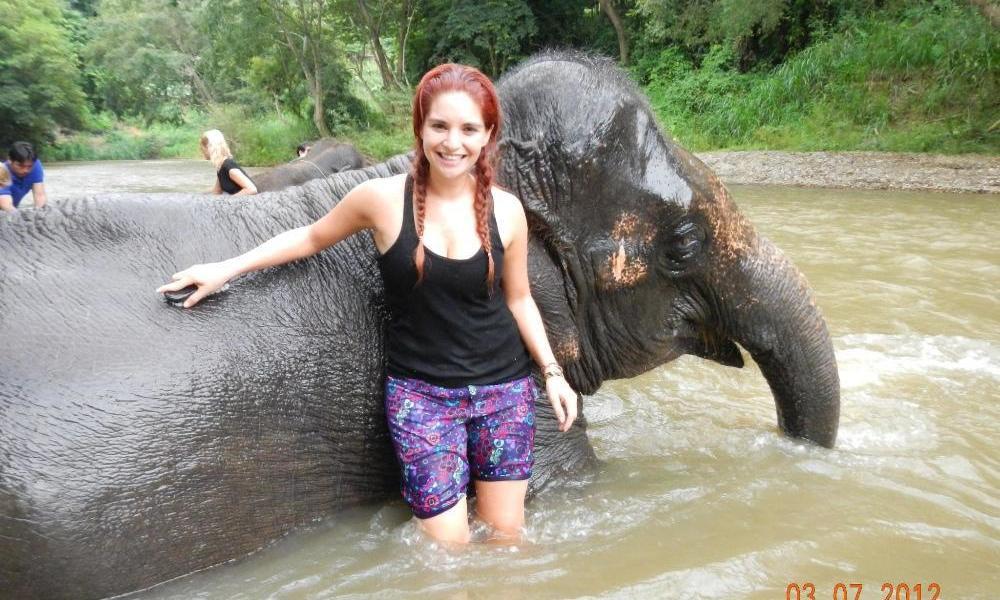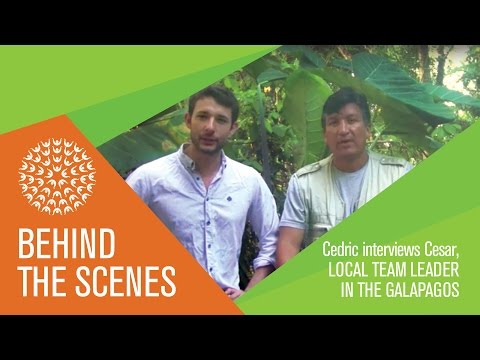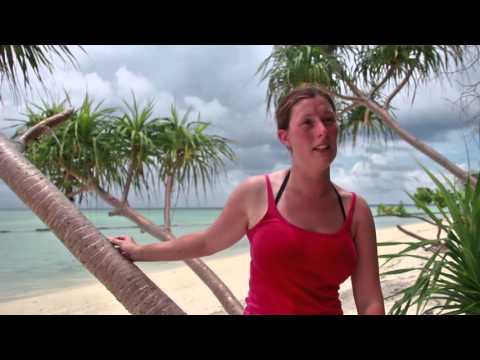Hoping to Impact 5 Countries in the next 2 Years!
My Travel Story
Below is a more detailed description of each program taken from the wesites:
Marine an Sea Turtle Conservation Borneo,
The marine conservation project focuses on protecting and replanting coral reefs damaged by 45 years of illegal blast fishing around the islands of the Celebes Sea, Malaysian Borneo. Damaged reefs offer no hiding places for fish, and blast-rubble scattered over the sea floor leaves bare sand, which supports few species.
Volunteers have made a huge difference in marine conservation in this area. Since volunteers have started at the project, fish are more plentiful, the coral is growing and there are more turtles and sharks. The increase in marine life is because of the work volunteers have done helping replant coral off the island. Some of the coral is now saucepan sized, and there is an incredible difference in fish numbers in these planted areas versus the non-planted parts.
Agriculture Project in the Atlas Mountains of Morocco,
The Agriculture Project in Marrakech is designed for those volunteers who enjoy the more physical aspect of volunteering and don’t mind getting their hands dirty. The focus of this project is to assist farmers in the rural villages of the Amazigh (Berber) community, in order to improve their farming outcome. Volunteers will be located in the Atlas Mountains and work involves feeding animals, managing offspring, milking, and identifying additional husbandry needs. Volunteers also have the opportunity to assist farmers in ploughing, seeding, weeding, and harvesting, and are encouraged to teach Basic English to the farmers they are placed with.
Elephant Sanctuary and Conservation in Surin,
Generations ago the elephants were originally captured from the wild jungles to use as farming ‘machinery’ by Surin’s founding fathers. In more modern times however, the use of elephants in logging and agriculture has become redundant and with a fully grown elephant eating huge amounts of food each day, these elephants are extremely expensive to look after. Many elephant owners (known as Mahouts) sold their elephants or took them to the streets of the big cities to beg for money from locals and tourists alike. Through many years of collaboration and volunteering effort we were able to support this village and ensure that the mahouts no longer need to take to the streets and go begging with their elephants. Instead, the community focusses on giving visitors the opportunity to learn about elephants in Thailand, spend time with them and also experience living in the local community.
Jungle Conservation in Peru,
In these projects, both which are based in the Amazonian Rainforest, I will be involved in various types of work depending on the current needs of the project. The primary work areas are reforestation, greenhouse development, maintenance of trails and lodges and wildlife inventories. Working in reforestation includes planting trees, shrubs and orchids as well as removing non-native and invasive species of bamboo. Wildlife inventories include observing and counting various species of birds and primates. During rainy days work may be limited and may include repairs at the lodge and/or working with the local school. Volunteers can also get involved in teaching English at the local school following their regular work.
Environmentalism Project in Galapagos, Ecuador,
Exotic and invasive species like blackberry bushes, fire ants and wild pigs affect the indigenous biodiversity of the island. They compete with native species for food and space, and alter the food chain and physical environment in irreversible ways. Their impact is especially dangerous because the local native species have evolved in isolation and lack defenses against foreign threats.
The project recognizes the relationship between nature and humans. The project aims to remove foreign species while supporting local agriculture to reduce the current need for fruit and vegetable imports. Volunteers live on the reserve and work throughout the area. Depending on local need volunteers are involved in a range of conservation activities. These may include removing foreign plants, especially blackberry, or “mora”, by hand and with machetes; collecting seeds; helping in local greenhouses; and participating in community and/or government initiatives that reach out to local farmers, particularly coffee and organic vegetable growers. Volunteers may also partake in reserve tasks like basic construction and trail maintenance, as well as collecting fruits for the cook and helping in the kitchen. Volunteers also frequently go on guided “caminatas”, or walks, with local team members to learn about the area – educating volunteers so they can become advocates for Galapagos conservation is an important part of the project.
I hope you will help me embark on these many journeys and help the planet. Even the smallest of donations will be greatly apreciated.
Much love.
Updates
3-
My Borneo Trip In January 2017
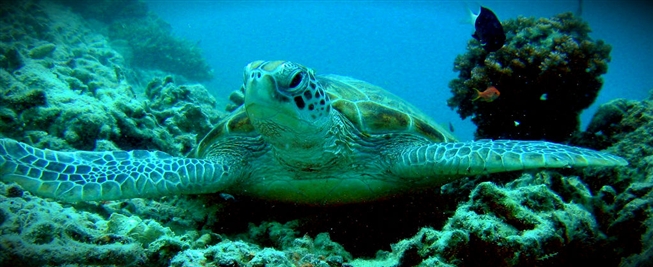
Endangered Green and Hawksbill turtles are common on Pom Pom island and each year many visit the beaches to nest.
The practice of Cyanide fishing for the live fish trade has also reduced populations of many species to critical levels. Through raising environmental awareness, campaigning for tighter restrictions on illegal fishing, and volunteers’ conservation efforts, the project is creating solutions to these problems and aiding the recovery of the reef and greater ocean environment.
By collecting fragments of hard and soft corals and transplanting them into damaged areas, volunteers are aiding the recovery of these habitats and increasing biodiversity. Greater fish populations encourage larger predators such as reef sharks and rays to remain resident in this marine sanctuary, which is the ultimate goal.
Despite extensive blast and cyanide fishing, the area around Malaysian Borneo still hosts a vast number of species. Pelagic fish schools are common, from anchovies to sardines and tuna, and the occasional sail fish and marlin are seen feasting on the smaller shoals. A myriad of colourful reef fish are observed metres from the shore.
The island is situated in the Celebes Sea, in the ‘Coral Triangle’ – the area of ocean which has the most reef species in the world. The island also has an extensive lagoon, with resident juvenile and nesting adult Green turtles. All these and more will share your work environment and keep you company as you replant coral in the warm waters of Pom Pom Island. -
My Borneo Trip In January 2017
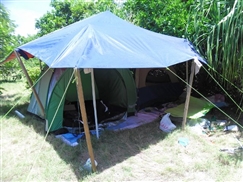
This will be my home for the two weeks of my stay. Although, most of my time will be spent in the water.
More Travel Information
Adventure Registry
-
Airline Miles
0
-
Campaign Ended
$ 230 USD
Total Donation Received-
1%
Funded -
$ 14,014 USD
Goal Amount -
0
Days Left
-
-
Cost Calculator
-
Accommodation
$ 4,999
-
Airfare/ International Flights
$ 8,000
-
Medical/ Travel/ Accident Insurance
$ 347
-
FundMyTravel Site Fee
$ 668
-
-
Donor Rewards
-
25 USD
I will give you a shout out on social media, thanking you and saying how awesome you are
-
50 USD
I will make you a desert of your choosing (i.e cookies, brownies)
-
100 USD
I will bring you back a postcard from one of my destinations
-
150 USD
I will bring you back a small souviener
-
200 USD
I will bring you back an item of clothing from one of my destinations (ex. a t-shirt, scarf)
-
-
In Partnership with:
International Volunteer HQ
-
Funders
-
Anonymous Funded $ 20 USD
Sep 13, 2016 -
Kaesy Cornelison Funded $ 110 USD
Sep 12, 2016 -
Creed Wyatt Funded $ 100 USD
Sep 06, 2016
-

